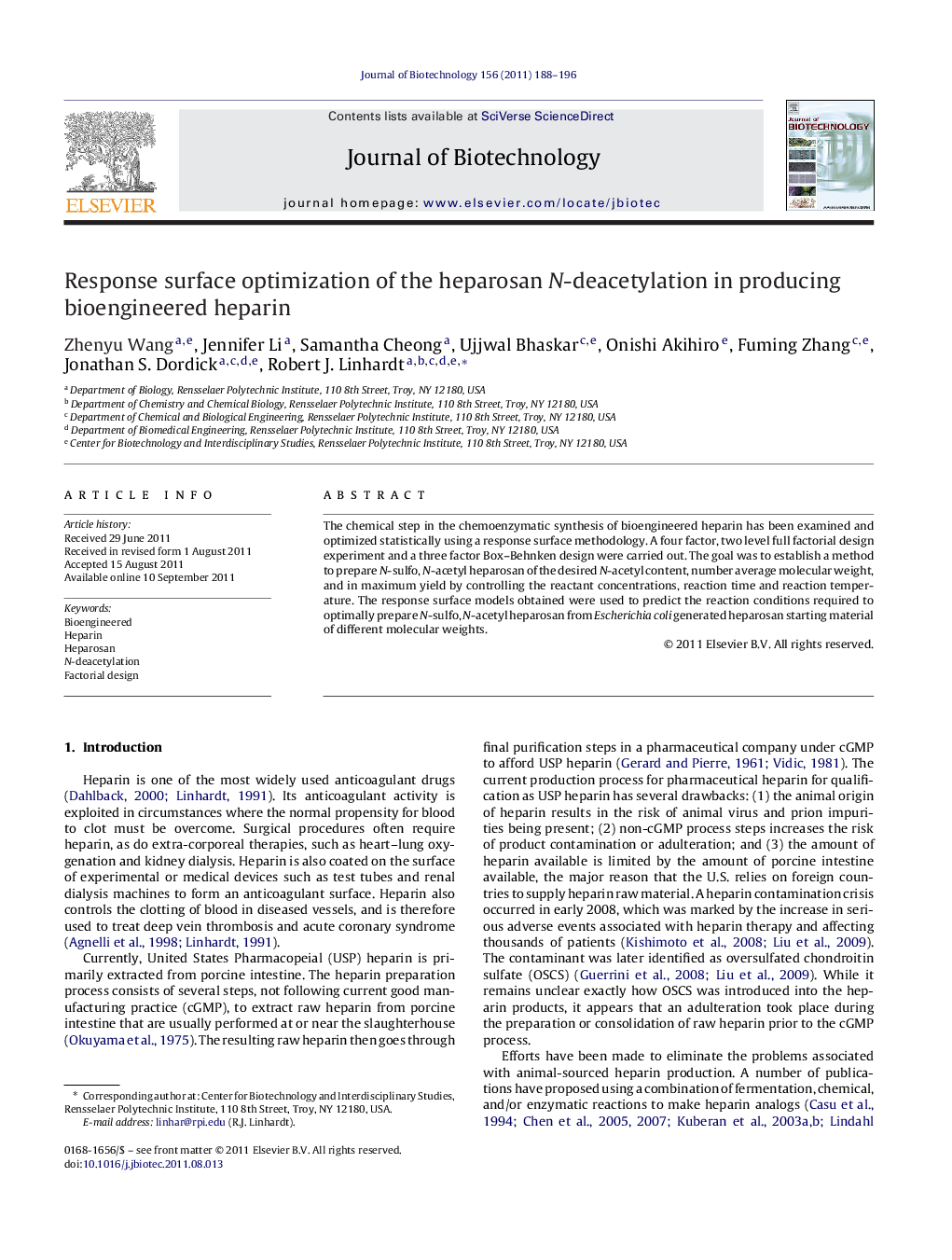| Article ID | Journal | Published Year | Pages | File Type |
|---|---|---|---|---|
| 23735 | Journal of Biotechnology | 2011 | 9 Pages |
The chemical step in the chemoenzymatic synthesis of bioengineered heparin has been examined and optimized statistically using a response surface methodology. A four factor, two level full factorial design experiment and a three factor Box–Behnken design were carried out. The goal was to establish a method to prepare N-sulfo, N-acetyl heparosan of the desired N-acetyl content, number average molecular weight, and in maximum yield by controlling the reactant concentrations, reaction time and reaction temperature. The response surface models obtained were used to predict the reaction conditions required to optimally prepare N-sulfo, N-acetyl heparosan from Escherichia coli generated heparosan starting material of different molecular weights.
► Optimized chemical step in the chemoenzymatic synthesis of bioengineered heparin. ► Optimizedusing a response surface methodology. ► A 4-factor, 2-level full factorial design experiment was used. ► A 3-factor Box–Behnken design was carried out. ► Established method to prepare N-sulfo, N-acetyl heparosan. ► Response surface models obtained were used to predict the reaction conditions.
